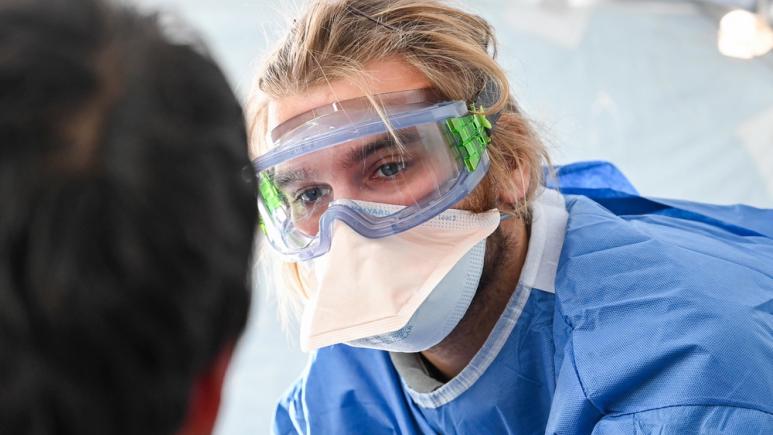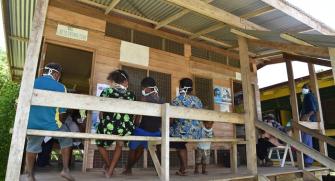Thoracic ultrasound: a major contribution to the diagnosis of patients with COVID-19
Between August 2020 and April 2021 during the first waves of the COVID-19 pandemic, a study coordinated by Epicentre's epidemiologist Maria Lightowler assessed whether thoracic ultrasound could predict the outcome of patients with pneumonia following COVID-19.
“We examined over 600 ultrasounds from 248 patients admitted with a diagnosis of COVID-19 at Hospital del Mar," explains the epidemiologist.
The average age of the patients was 60 and 2/3 were men; 13 died and 36 had to be admitted to intensive care. The average number of days of admission for those who survived was 8.5 days.
"The analysis consisted in assessing the condition of the lungs at twelve different points and establishing a score based on the images obtained," explains the epidemiologist.
Four times greater risk for patients with high scores
The results, published in the Journal of Clinical Medicine, established a risk scale based on ultrasound scores, making it possible to identify patients most at risk of developing severe complications, and requiring admission to an intensive care unit and/or invasive ventilation. A score of 17 or more out of 36 indicated an increased risk of an unfavorable evolution that could lead to admission to an intensive care unit or the need for invasive ventilation, and sometimes to the patient's death. In such cases, early intervention, including oxygen therapy, appears necessary. A score of less than 7 indicated a non-severe infection, treatable by standard methods.
Dr Robert Güerri, Head of the Infectious Diseases Department at Hospital del Mar and one of the study's authors, also points out that "this study, carried out at the start of the COVID-19 pandemic, has also enabled many professionals, particularly medical interns, to familiarize themselves with the use of ultrasound, discovering its versatility and clinical usefulness".
The study, in which medical doctors completing their training at Hospital del Mar played a decisive role, also points out that repeating the test 72 hours after admission does not improve a patient's prognostic capacity.
The study confirms the usefulness of this diagnostic test for the management of patients with COVID-19 and highlights its potential use in other viral diseases with lung involvement.
"Since 2018, MSF has had a training and implementation plan for portable ultrasound to train healthcare staff and improve patient care," explains Cristian Casademont, MSF Spain medical director. "It is a rapid and effective diagnostic tool that has the potential to significantly improve the quality of care. For example, MSF recently conducted a study in South Sudan and Guinea-Bissau on how ultrasound facilitates the diagnosis of patients with pediatric tuberculosis."
As for Epicentre, Maria Lightowler is currently finalizing a study on the evaluation of ultrasound as an alternative to chest radiography for the diagnosis of tuberculosis in Papua New Guinea.
On the other hand, as Dr. Güerri explains, "after the first waves of COVID-19, the use of clinical ultrasound spread among healthcare professionals in various medical fields. It has become both a diagnostic and prognostic tool, facilitating informed decision-making. Clinicians have embraced ultrasound to rapidly assess patients, improving the efficiency and accuracy of treatment in a demanding and dynamic clinical environment.
This study was supported by the Transformational Investment Capacity (TIC) fund of Médecins Sans Frontières (MSF), which has made training, advanced use and research on point-of-care ultrasound (POCUS) one of its priorities.









